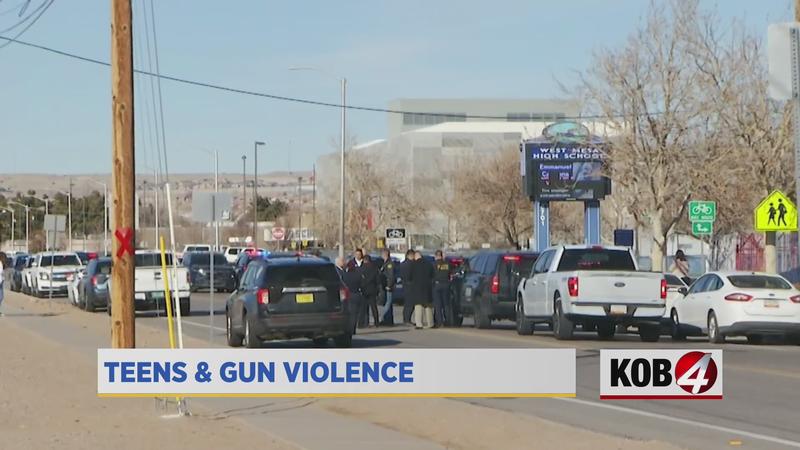Top UNMH trauma doctor discusses teen gun violence increase
[anvplayer video=”5095053″ station=”998127″]
ALBUQUERQUE, N.M. – Students are speaking out against gun violence amid a school year especially defined by the deaths of Andrew Burson and Bennie Hargrove near the school grounds students grace each day.
Among teens, gun violence is more than just a problem other teens are noticing. Dr. Richard Miskimins, the associate trauma medical director at UNMH, states there has been a significant increase in people under 18 being shot.
In 2018, UNMH was seeing around 5-to-9 injuries every three months – until it took off in 2019.
"We’ve essentially, since that time, doubled the number of gun injuries and firearm injuries in those under the age of 18," Dr. Miskimins said, "and now in our most recent quarter I believe it was 13 – which kind of shows the overall trend we are seeing in general."
Dr. Miskimins says, looking at the numbers from December last year, there are very few people under the age of 10 and those are usually accidental – the biggest increase has been among teenagers.

"Even if you don’t die from a firearm injury, they’re often life-changing events," Dr. Miskimins stated. "A lot of people end up with colostomy days when you bring the intestine up to the skin and poop in a bag. A lot of them end up paralyzed because they’ve been shot in the spine or other things and we can’t fix anything for paralyzed people."
Another thing to think about is how deadly firearms are using a triangle theory. Car accidents, for example, have a wide base for the number of accidents there are. Then, the number of people who end up in the hospital from those crashes is significantly lower, until you get to the tip of the triangle where you have the number of people who die from those accidents.
For gun violence incidents, it’s the opposite.
"When you look at firearm injuries, it’s the only thing that has an inverted pyramid so there are more deaths than there are people that come to the hospital in the emergency department because of the lethality of it," Dr. Miskimins said, "and so a lot of people don’t even make it to the hospital."
This inverted pyramid affects young people, especially, even though UNMH hasn’t reported as much of an increase in gun violence deaths.
"It’s one of the leading causes of death in young people in the state under the age of 30," Dr. Miskimins said, "and there’s a lot that can be done but it requires people to actually discuss it and to come with open thought and open mind as to ways to improve."
Dr. Miskimins says it’s important to look at data when making decisions to prevent gun violence – such as what laws to enforce, recognizing what laws are effective and a New Mexico law that prevents people convicted of certain domestic violence offenses from having guns.
"We can create an office of firearm injury prevention within the Department of Health that uses evidence-based approaches, such as education classes," Dr. Miskimins said. "So for responsible ownership, trigger locks being available, enforcing the laws that the state has already passed and finding which laws are being enforced and which ones aren’t – and then utilizing that data to decrease the number of deaths."
The New Mexico Department of Health already has an injury prevention program and money has been allocated to expand gun violence prevention. However, there is not a specific office of firearm injury prevention right now.
UNMH is still above 100% capacity amid the pandemic. For them, he says, it’s emotionally challenging to not only see more and more young people show up with gunshot wounds but also figure out where to put those patients amid capacity issues.